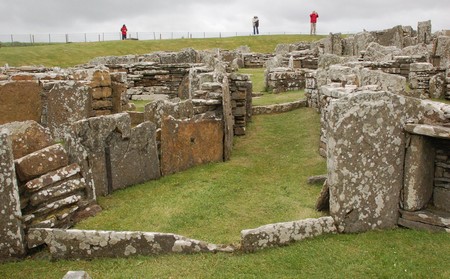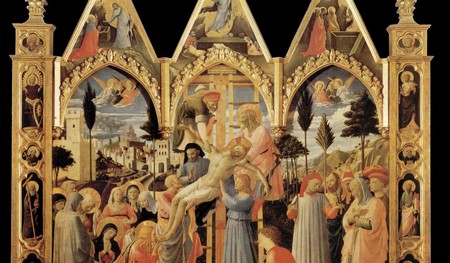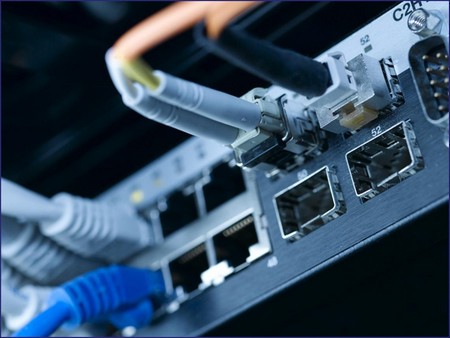As humans, we continue to strive to make our lives more fulfilling. Our quest for knowledge and understanding nature around us is inherent in all of us. Technology in a sense can be defined as inventing tools and advancing knowledge. In addition, technology also utilizes the cumulative knowledge and technologies already available to further advance our knowledge and build upon or discover new tools which can be utilized by mankind.
Defining Technology Through the Ages
Since the beginning of man, we have utilized tools and developed technology- such as stones to kill prey and butcher meat. Since different technologies have come to define the different ages of man and civilization, here is the history of technology based on specific ages.
The Stone Age

During the Stone Age, which many consider lasted from about 2.5 million years ago as humans started to develop to about 3300 BC, which began the Bronze Age; there were several technologies that developed. While they required little knowledge to harness these technologies, nevertheless they were instrumental in keeping our species from becoming extinct. Ultimately, the technologies and knowledge that was gained throughout the first 2.5 million years of existence helped humans evolve from the Stone Age to the Bronze Age, where increasingly sophisticated tools and knowledge were harnessed. Some of the technologies that were developed during the Stone Age include the use of stones for killing prey and creating axes. The ability to harness fire (about 1.5 million years ago), clothing (about 100,000 years ago), the ability to domesticate animals (occurring about 15,000 years ago and other inventions such as the bow and arrow (9,000 BC), Agriculture (8,000 BC) and the wheel (4,000 BC).
The Bronze Age
The Bronze Age, which roughly lasted from 3300 BC to 1200 BC, was a time when civilization started to coalesce around the Fertile Crescent and spread outward to Europe, Asia and African. The Bronze Age gets its name from a time when metals such as copper and tin were being used to create weapons and tools. The technology to smelt metal ores into tools was a definite advancement from previous stone tools being used. Some of the technologies that were advanced during this time included the further domestication of animals and agricultural innovations, the chariot (about 2,000 BC), the use of salt and the construction of permanent settlements- many of which still stand today.
The Iron Age
The Iron Age usually dates from 1200 BC to 500 BC, which is the start of the Roman Empire. During this time period, the usage of iron began to become prominent as the metal for tools and weapons, being that it is much stronger than copper, tin and bronze. During this time period many people migrated to the farther reaches of continents including Europe and permanent settlements were developed. In addition, during this time period several religions and philosophies were developed including Buddhism and Confuciusism. Some other technological advancements included the sundial (800 BC), glass (500 BC) and a wide range of advances in trade, ships, architecture, education, etc.
The Age of Ancient Civilizations
From around 500 BC with the start of the Roman Empire to about 500 AD when it eventually fell and Medieval Europe took hold, there was plenty of technological innovation occurring. For many scholars, this period in human history is considered to be the Golden Age as civilizations gelled and technology in all facets of human life expanded. It should be noted that civilizations all around the globe began to grow (such as in China, India, Europe, the Middle East, Africa, Central & South America, etc). Some of the many innovations that occurred during this time include: city planning, sanitation, education, architecture, matches, paper, math, religion, bridges, the magnetic compass, law and government, aqueducts, road building, reservoirs, stirrups for horses, concrete, art, philosophy and more.
The Middle Ages
The Middle Ages, which took place from 500 AD to about 1500 was a period in Europe, where for the most part technology either stagnated or even went backwards. However, it should be noted with the Crusades and the development of more trade and travel to the Middle East, Europe once again began to grow and this growth in all areas of society ushered in the Renaissance period. While for the most part Europe stagnated, there were several innovations in technology including the mechanical clock, the windmill, spectacles and innovations in agriculture, architecture and the military. If you will like to understand how this innovations are relevant, this article explains what it is, and why it is important.

Muslim Agricultural Revolution
During the 8th century, the Islamic world located predominantly in the Middle East revolutionized and ultimately globalized a wide range of agriculture techniques and crops. In addition, during this revolution, hydropower was utilized in order to mill a variety of different crops along with a wide range of other uses was innovated. Other technological advances included coffee the fountain pen, quartz glass, innovations in math, hard soap, shampoo, nitric acid, the celestial globe and incendiary devices.
The Renaissance Period
As trade between Europe and the Middle East exploded during the crusades and as the Europeans thirst for knowledge grew, the Renaissance period began- usually marked from the period of the 14th century to the 16th century. During this time period, Europe flourished both artistically and scientifically. Some of the major innovations during this time period occurred in education. A major invention-the printing press helped spread books throughout Europe and the world communicating a wide range of ideas and ultimately furthering education. Many schools and universities were developed. architecture, philosophy and other disciplines expanded and grew and medicine also enjoyed a whole host of innovation.
Age of Exploration
With trade becoming a great means of wealth for countries in Europe, the Age of Exploration came to dominate the sphere of technology and innovation, mainly in shipping, navigation and cartography. During this time period which lasted from the 1400’s to 1600’s, many ships sailed across the globe and around the world. During this period, the New World was discovered and settlements and colonization occurred- along with the conquest of local, indigenous peoples.

The Industrial Revolution
The Industrial Revolution was a time of great innovation due to the harnessing of cheap energy (through coal) and the steam engine. These two innovations which occurred mostly in Britain during the late 18th and 19th centuries was a milestone in human technology. With the ability to no longer rely on water power, animal power or human power for farming and other uses, coal can now be burned to drive steam engines for a wide range of uses including factories, transportation (steam locomotives and steam ships) and the ability to mass produce metals such as wrought iron and other metals to build bridges and other items. With the Industrial Revolution came the transportation revolution that made it much easier to transport people, livestock and goods all around Europe and now the United States. With the Industrial Revolution came also huge innovations in the economy and society as more and more people left agricultural communities and migrated to the cities to live and work. This helped pave the way for a society based on specialization.
19th and 20th Centuries
During the last two centuries, enormous innovations in technology have occurred- too many innovations to list. However, it is important to note that many of these innovations have occurred due to previous discoveries and the cumulative amount of knowledge and technology that has been developed over the course of time. Just some of the huge innovations in technology that have occurred over the last 200 years include: huge changes in government, society, practically every institution, electrification, math and science, inventions such as the radio, television, telephone, computer, internet, automobile, airplane, medicine, economy, military weaponry, refrigeration, household appliances, sanitation, nuclear power, photography, spacecraft, cellular phones, mechanized agriculture and more.

Today, we live in a society that has vastly been changed due to innovations and enhancements from technology. This cumulative knowledge is growing at an increasing speed and level. While it took usually centuries or millennia in the past for society to be changed from technology, today, technology can have a huge impact on our society in a matter of decades or even years. While it is not known what the future holds for technical innovations, with the thirst for knowledge and discovery innate in humans, you can be sure that more technological advances will be seen on the horizon.
Comments are closed